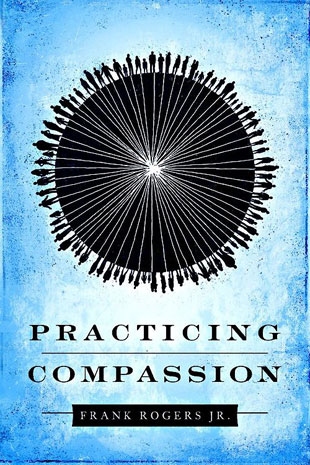"Compassion is the means to becoming most deeply human. It revives the pulse of one depleted by heartbreak and suffering. It sustains the pulse of interior freedom and grounded empowered care. And it resuscitates the pulse of the person deadened by brutality, uniting him or her once more with the community. Compassion is the heartbeat that restores life. Compassion is the bond of genuine connection." These engaging definitions of compassion are illuminated in this new book by Frank Rogers Jr., the Muriel Bernice Roberts Professor of Spiritual Formation and Narrative Pedagogy at Claremont School of Theology in California. He also codirects the Center for Engaged Compassion.
All of the world's religions give a central place to this heart practice. Rogers outlines four moves of the Compassion Practice:
1. Catch your breath (Get grounded)
2. Take Your PULSE (Cultivate compassion for yourself)
3. Take the other's PULSE (Cultivate compassion for another)
4. Decide what to do (Discern compassionate action)
He explains the six dimensions which compose the PULSE of compassion: paying attention, understanding empathetically, loving with connection, sensing the sacredness, embodying new life, and responding with acts of healing, kindness and care.
Although we might think that this grand spiritual practice can only be incarnated by saints and towering religious figures in history, Rogers makes it clear that all us can cultivate compassion and bring it to bear on all aspects of our private and public lives. We are sons and daughters of the Beloved and, day by day, we can tap into this inner power to bring healing and help to the battered and tattered world.
In a chapter on cultivating compassion for yourself, Rogers offers two practical and accessible meditations: Welcoming Presence Meditation and Deepening Your Understanding of an Interior Movement. The author hits high stride in the chapter on cultivating compassion for another with key understandings of loving our enemies, hearing the cry of a Beloved or Friendly Other, and relating to Difficult Others. He also identifies signposts for discerning genuine compassion, including the promotion and preservation of our own humanity.
We are grateful to Rogers for putting compassion into focus and for providing us with specific avenues of practice. Of course, one of the most radical practices of Christianity is letting go of the idea of the enemy and replacing it with the understanding that he or she is someone who needs our love and understanding. Through compassion, we conquer the numbness and the daze that keeps us closed off from the pain and the suffering of the world.
